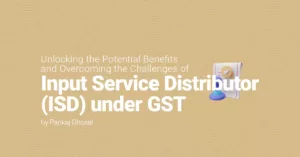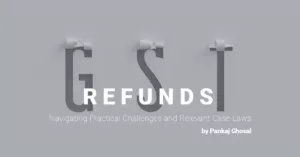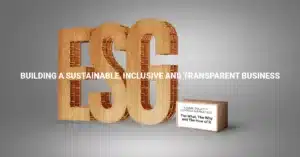Key Highlights:
- Union Budget 2020 expectations have started buzzing, as the onus is now on the Finance Minister Nirmala Sitharaman to provide relief to an ailing economy with a contracting GDP
- The banking sector, NBFC sector, and real estate sector could surely use some solutions too, as their condition has worsened with the slowdown percolating further
- We trace how the banking and NBFC sector in India started getting affected by the Government’s policies after the 2014 general elections and suggest corrective measures to the Government for the upcoming Union Budget 2020 speech
- Our expectations from the Union Budget 2020 are further analyzed, as we discuss how the public banking as well as private banking sector needs a revival to ensure stronger economic health
A Brief History Of Indian Economic Reforms In 1991 And Their Impact On Indian Banking Scenario
Former Prime Minister P.V. Narsimha Rao had once spoken, “Finance Ministers are like zeros. Their value depends on what you put before them. The digit on left is provided by the PM.” It was his vision in 1991, supported by an able deputy Dr. Manmohan Singh (the then-Finance Minister), which liberalized the economy and saved India, which purportedly then was on the brink of bankruptcy.
Post-1991 reforms and the removal of “license raj”, India progressed over the decades to be recognized as one the fastest growing economies and its prowess and skills were there on display for the world to see. A progressive economy needed a well-oiled financial system, and thus private sector banks with foreign investments were allowed.
The erstwhile sleepy public sector banks came to life and went into a race to compete with private sector banks (viz. HDFC/ICICI) which had rapidly started growing, threatening to take away a major share of business. The healthy competition turned out to be a boon for Indian retail as well as corporate borrowers. The increased consumer demand, driven by growth and pumped by Government investments gave ample opportunities for everyone to grow and flourish and the needs were being well-met by the Indian banking system which was growing hand in hand.
The Aftermath Of Dr. Manmohan Singh’s Prime Ministerial Reign And Narendra Modi’s Rise
It was much to the irony of this country that the same architect of these massive reforms, Dr. Manmohan Singh who later rose to the ranks to become Prime Minister, was thrown out of power in the general election held in 2014 majorly on account of serious charges of massive corruption against his Government, on presumptive and notional losses highlighted by the then-CAG.
The audit findings though have not found ground in any court of law thus far. Nevertheless, riding on the idea of corruption-free governance and development, India gave a decisive mandate to Mr. Narendra Modi, who took over as PM in 2014. The series of negative campaigns run by Congress against Mr. Modi, demonizing him for the Gujarat riots only helped him strengthen his hold amongst masses.
Mr. Modi’s exemplary oratory skills and his track record of governance in Gujarat gave ample reasons for India to rejoice and he was construed to be a messiah to all the problems plaguing the country. In a bid to promote ease of doing business and manufacturing in India, his Govt. launched several schemes like Make In India, Startup India, Skill India, etc. between 2014-16 which got a lot of attention globally.
Key Economic Reforms And Their Problems: The Start Of An Economic Slowdown In India
June 2016 saw a progressive reform which was much needed in the form of a quasi-judicial body NCLT/NCLAT to find ways to resolve long pending stressed assets with banks. However, in November 2016, carried away by his strong will to trounce his political opponents, Mr. Modi announced a demonetization drive (largest exercise taken by any democratic nation) which was projected as panacea to all issues around corruption/terrorism/shadow economy, etc. His bizarre decision left millions of Indians queuing up to deposit cash into banks. The impact of the move had far-reaching adverse consequences on the informal sector which was left stranded. Real estate projects were stalled and other informal sectors like agriculture, etc. were deeply impacted.
The country was yet to come out of the shock of demonetization and the government went on to hastily implement GST in July 2017. While few would dispute that GST was a needed reform, the manner and timing was questionable. The GDP saw a QOQ decline and came around 6.3% from 8.6% in 2015. It was during this time, that a slowdown started gripping Indian economy. Irrespective of whatever justification anyone gives in favor of demonetization and GST (like overwhelming majority to BJP again in 2019), plenty of data speaks for itself that these decisions were the drivers of the widespread slowdown we see today.
Ever since this government came to power in 2014, Banking and Financial Services (BFSI) and MSMEs were time and again cited to be the focus areas but unfortunately, these two sectors have witnessed maximum stress. While MSMEs are yet to recover from demonetization and GST, the BFSI sector has seen probably the worst period in the quarter of a century. MSMEs have bore the brunt and as different sectors moved into red, survival of the fittest has been the order of the day.
It’s a fallacy to believe that MSMEs and retail businesses would flourish in the absence of large corporate growth. If Maruti fails, its OEMs/distributors would also fail in due course and so would its employees/wage-earning labors. So, defaults would be cyclical and it’s a matter of time till it percolates to the bottom of the pyramid.
It is easier to link the banking mess to the previous UPA regime, but the cycle of lending and recovery goes through a churning process which is continuous and blocking lending to boost recovery/reduce stressed assets is a recipe for disaster which this government failed to realize.
When the economy was growing, the PSU lenders went with the flow of growth (which was basically their folly) and provided credit to long gestation projects, be it thermal/roads/sugar, etc. or any other such sector. These projects got stuck either due to ill-intentioned borrowers or delayed approvals/clearances from government.
However, rather than taking a prudent approach to recovery and looking to complete the projects held up, the focus shifted on fraud detection, and pulling out skeletons from the closet which could corner the previous UPA regime.
No Rest Or Sigh Of Relief For The Banking Sector In India
The flawed approach of looking at bankers and corporate defaulters with suspicion eroded the confidence of bankers and the net worth of banks. In fact, the fear of default, hounding at the hands of CBI/CVC, and frequent tampering with the banking system did not allow banks to settle down and carry out business in routine.
Let’s look at the below timeline:
- Introduction of NCLT: July 2016
- Implementation of demonetization: November 2016
- SBI merger: April 2017
- Implementation of GST: July 2017
- Nirav Modi’s fraud of PNB disclosed: January 2018
- February 2018: Revised circular with “one day default reporting”, putting an end to restructuring process and a 180-day timeline to refer cases to NCLT
- IL&FS default: September 2018
- January 2019: Merger of BOB/Dena/Vijaya Announced
- April 2019: Supreme court quashed the Feb 2012 circular
- June 2019: Revised RBI circular
- July 2019: DHFL default
- August 2019: Announcement of consolidation of remaining public sector banks
Once can easily make out how unsettling it would have been for bankers to carry out routine business of lending in such an uncertain policy environment along with frequent negative reporting in media with several heads of private/public sector banks being under scanner for alleged fraud/poor corporate governance.
Arrested Bank of Maharashtra CEO Mr. Marathe, ousted ICICI Bank Chief Mrs. Kochhar, Removal of Axis Bank and Yes Bank CEOs and frequent framing of charges against several senior bankers like former Canara Bank chairman RK Dubey, former United Bank of India chairman Archana Bhargava, former Punjab National Bank CEO Usha Ananthasubramanian and former IDBI executives Kishor Kharat, Melwyn Rego and MS Raghavan, further added salt to the wounds.
I am not going into discussions of whether these charges were right or wrong, but they dampened the sentiments of lenders and their risk appetite.
The Ripple Effect Of NBFC And Real Estate Slowdown On The Economy
The blocked flow of credit to the NBFC and real estate sector had a crippling impact on the economy, and it entered a vicious circle. The NBFCs have been called as the shadow banking space; however, I believe the term is incorrect.
Shadow follows the body, NBFCs did not. They created their own space, niche areas and strengths, and aided the country in financial inclusion. From funding to a small tea-seller at a railway station by an MFI to lending to a large business house with stuck real estate projects, or auto dealers with inventory piled up, NBFCs were the ones taking riskier calls at premium but driving the economy.
Yes, they borrowed from banks and capital markets, but the cycle ensured flow of credit to every borrower forming a part of the pyramid. With the IL&FS default, the role of regulators/board/credit rating agencies/banks came under the scanner once again.
Of course, they would have helped in increasing the magnitude of default, but the underlying cause was the delay in completion of its road projects due to litigations/delayed clearances leading to adverse cash flows, thus making the group vulnerable. The IL&FS default triggered a crisis of confidence where every stake holder was looking at the other with mistrust.
Corrective Measures: Too Little, Too Late?
Only when matters seemed to be going out of hand, our Finance Minister realized the economy needs boosters. Though most of the boosters in my opinion like the RE Fund to NBFC PCG scheme has done little to help matters, the corporate tax cut could be a relevant one which I believe may start showing some positive impact in the medium term; though in the short term, it may not help much as any additional cash generated would be used to deleverage by all corporate groups, given the uncertain policy environment and a slowing economy.
Only when the leverage is comfortable, and India Inc. is comfortable on the war chest, they must keep for meeting any unforeseen adverse scenario they would look to restart the cycle of fresh investment or capital formation. That again would largely be driven by the amount of confidence this government can give in terms of policy certainty and de-criminalization of corporate defaults/policy over looks/interpretation errors.
The Government’s love for its manifesto and rush to push through its core agenda viz. abrogation of Article 370, or implementation of CAA followed by NPR, has only widened the social divide and so also the mistrust.
I’m not sure how much time the FM would be able to give to trust building, and I can say with a high amount of certainty that photo op meetings with industry leaders or economists would not help in the same. The soul is bruised, and healing of the body would be a façade of short term.
Union Budget 2020 Expectations: What Can The Government Do And What We Recommend
I had mentioned in the last pre budget expectations as well that the first thing this government needs to do is to build trust amongst the stakeholders and that is what I would again pitch for, as I believe the gap has only widened.
Liquidity does not appear to be a concern at this point of time, but the challenge is in spurring demand. With rising fiscal deficit and high consumer inflation, the Government has its task cut out. I am not sure what can be done to boost other sectors or to improve consumption pattern but for the BFSI space, I would recommend the following suggestions in the Union Budget 2020:
1. It’s time that the FM considers a one-time restructuring window for corporate borrowers (INR 5 crore and above). The judgment of cases to be considered for the same and ring fencing be best left to the choice of individual lenders.
2. PSU lenders would need a revision of their pay packages aligned to the market, which should be incentive driven. Today, a PSU banker does not fear not doing business, as at the most, they are likely to lose on some promotions if they don’t, but the mental trauma of being framed by CBI or losing hard-earned money is not there, which is a high probability in the event of them recommending loans in good faith going bad. The corporate lending branches should be specialized with higher pay packages and an incentive driven model for the higher risk they would take. In today’s environment, PSU bankers prefer retail posting branches rather than corporate branches only because they fear it has higher risks involved.
3. The CVC/CBI investigation cannot be at this scale for bankers. Large, corporate lending branches of PSUs end up spending 50% of their time in visiting CBI offices and correspondences with CVC/CBI/ED. That brings in a sense of fear and consequently, dampens sentiment. It must be left to the individual bank’s committees or boards to decide on the angles of fraud, criminality, and involvement of CBI/CVC etc. can be only based on the recommendations of these committees. Larger loans could be referred to IBA headed committees. Recently, the Government has taken a positive initiative in terms of referring loans higher than INR 50 core for investigation, only after the CVC panel approves it but the functionality and smoothness of the same would be key to bringing in some positive sentiments amongst bankers.
4. Now that consolidation of banks has been initiated, it would be prudent for these banks to have sectoral expertise-driven lending teams with flat and centralized decision-making credit hubs for speedy disposal of projects
5. For the time being, lending to NBFCs with a credit rating of “A” and above leverage lower than 3 times should be treated as PSL loans till the leverage remains below 3. Breaching the leverage benchmark would classify the loan Non PSL.
I don’t wish to sound like an eternal pessimist but with these few moves, the FM would probably be able to set the tone right and would propel activity on ground with focus back on lending and productive activities.
The IIP in November 2019 has shown a marginal growth of 1.8% against a contradiction of 3.8% last month and I hope this translates into early signs of revival.
The onus lies on the PM on the digit he adds to the left of FM to achieve his USD 5 trillion economy dream.
Written By Amit Pandey
Amit is a Partner at Coinmen Capital Advisors and heads the debt syndication and corporate finance practice for the firm.










